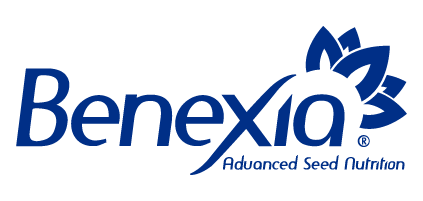Lipid Research Center
At Benexia®, we are world experts on chia oil.
Our Benexia® Xia Oil is an unrefined, extra virgin, cold-pressed oil made from fresh, high-quality, low-moisture chia seeds without the use of chemical solvents or diluents. Our careful and unique processing preserves chia’s liposoluble nutrients and bioactive components, resulting in an oil with the highest concentration of essential omega-3 fatty acids among plant-based oils, with excellent oxidative stability and superior organoleptic properties. As a result of our years of research and experience, we have built a Lipid Research Center dedicated to advancing our knowledge and expertise in the area.
Benexia´s Lipids Research Center (LRC) is formed by a team of chia experts committed to advancing scientific research in lipids and nutrition through advancing knowledge on the physical, chemical, and nutritional properties of chia and its by-products.
Over the past ten years, the LRC has focused its research on the comprehensive study of chia and its by-products (oil, protein, and fiber). These studies have included the exploration of their qualitative and quantitative chemical compositions, oxidative stability, nutritional compositions, analysis of new molecules from chia-based ingredients, and the analysis of chia and its by-product biological activity as well as its by-products bioactive components, phenolic extracts, and enriched fractions.
In addition to Research, Benexia´s Lipid Research Center pioneers new process developments, such as spray drying and emulsification, ensuring Benexia´s products meet evolving market requirements and trends.
MEMBERS

Carolina Chica
Nutritionist – Research & Development, Nutrition and Regulatory Manager at Benexia®.
STUDIES & TESTS
Our Lipid Research Center collaborates closely with Universities, Food Technology Institutes, and R&D Centers worldwide. Together, we develop comprehensive studies, tests, and analyses on chia oil, tailored to meet the specific requirements of each market. Some of our most common analyses include:
-
- Application stability in emulsions, nanoemulsion, and liposomes
ITMO, 2018 – 2019
- Application stability in emulsions, nanoemulsion, and liposomes
-
- Deep frying stability, fatty acids, and stability of frying products
Instituto de Nutrición y Tecnología de los Alimentos (INTA) of University of Chile / GCL, 2011
- Deep frying stability, fatty acids, and stability of frying products
-
- Oxidative stability in edible oils blend (olive, sunflower, canola)
EUROFINS, 2011
- Oxidative stability in edible oils blend (olive, sunflower, canola)
-
- Stability in dairy products application
ICYTAL – Universidad Austral de Chile (UACH), 2011
- Stability in dairy products application
-
- Stability in industrial processes (UHT, baking, cooking, frying)
Instituto de Nutrición y Tecnología de los Alimentos Instituto de Nutrición y Tecnología de los Alimentos (INTA) of University of Chile / GCL / CIDGRA, 2010 – 2011
- Stability in industrial processes (UHT, baking, cooking, frying)
-
- Antioxidant potential (Lipophilic and hydrophilic ORAC, phenolic acid)
Molecular Nutrition Laboratory UCC, 2010
- Antioxidant potential (Lipophilic and hydrophilic ORAC, phenolic acid)
-
- Microencapsulation (spry drying stability)
CIDGRA – ALFA CHILENA, 2008 – 2009
- Microencapsulation (spry drying stability)
-
- Oxidative stability study (climatic zone IV, storage conditions, consumer conditions)
CIDGRA/INTA – UC/ GCL, 2008 – 2010.
- Oxidative stability study (climatic zone IV, storage conditions, consumer conditions)
-
- Characterization Lipid components (phospholipids, triglycerols, sterols, tocopherols).
Molecular Nutrition Laboratory UCC, 2007.
- Characterization Lipid components (phospholipids, triglycerols, sterols, tocopherols).


